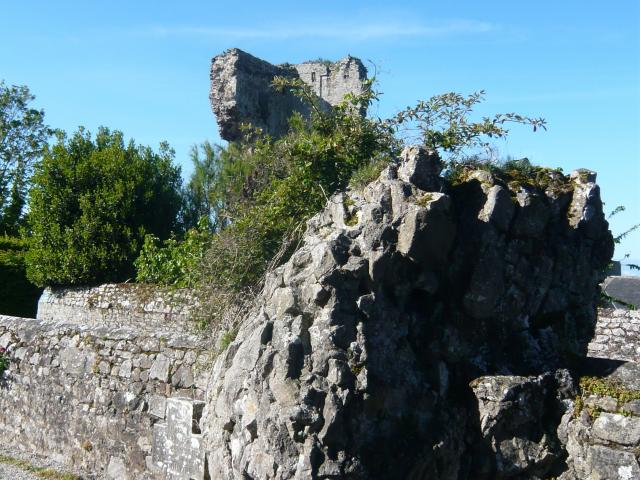THE DESTRUCTION OF THE CASTLE
In 1603, the stronghold of Regnéville was sold to Isaac de Pienne, Lord of Lingreville and Bricqueville-sur-Mer situated a few kilometres south of the castle. From Regnéville, he participated in a protestant conspiracy which proposed to raise Normandy to create a diversion from the siege of La Rochelle in 1628.
 Vue des ruines du chateau de Regneville avec des murs de pierre partiellement effondrés. Des personnes marchent autour des ruines, et un chemin mène à une petite structure en pierre. Le ciel est couvert, et le paysage environnant est vallonné.
Vue des ruines du chateau de Regneville avec des murs de pierre partiellement effondrés. Des personnes marchent autour des ruines, et un chemin mène à une petite structure en pierre. Le ciel est couvert, et le paysage environnant est vallonné.
